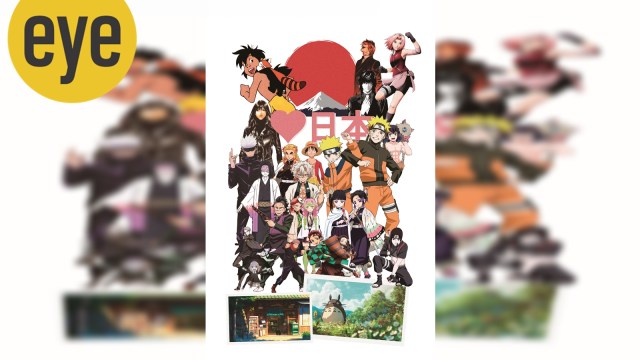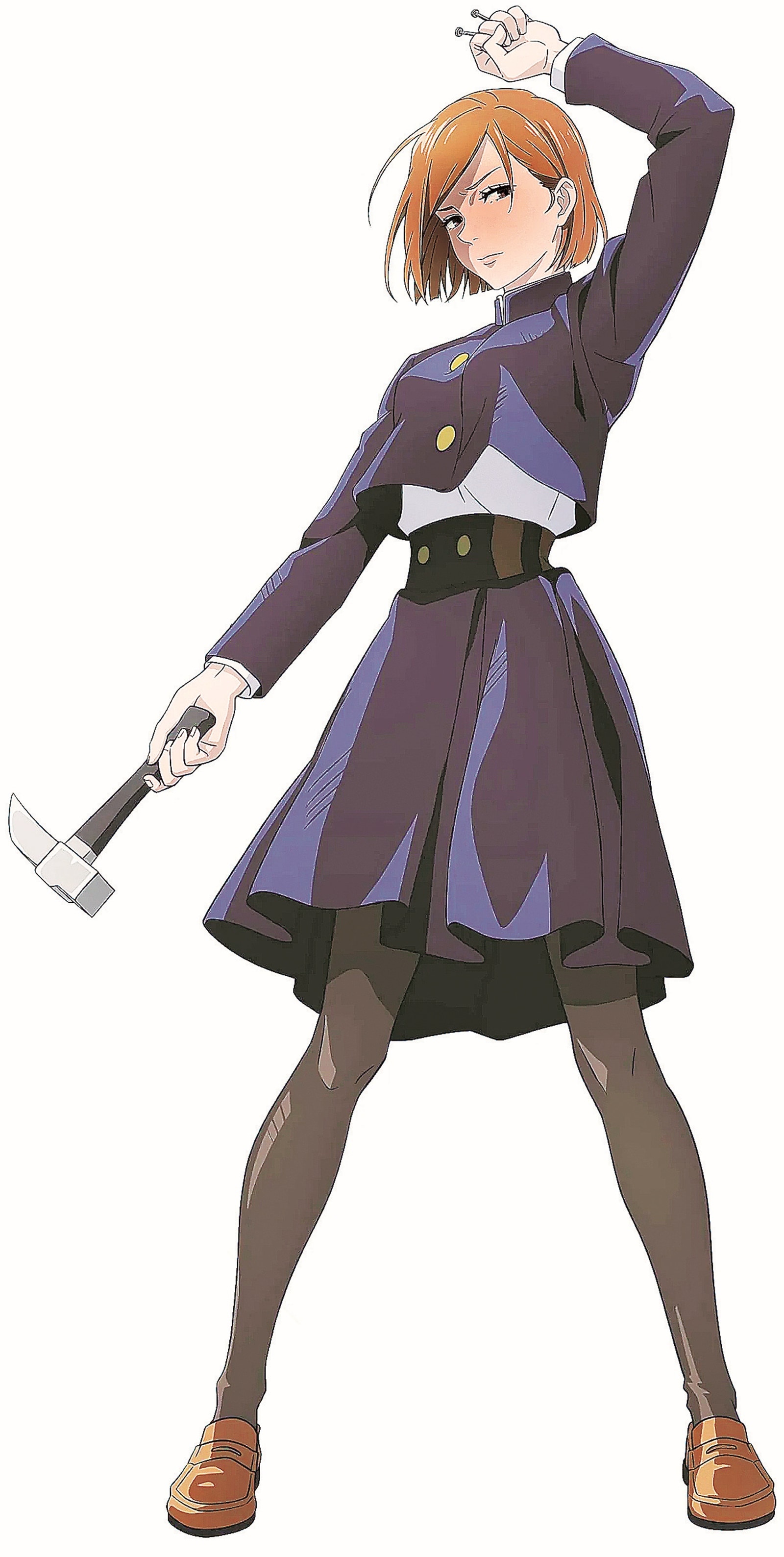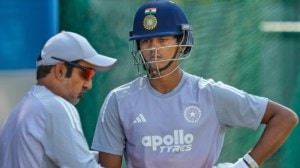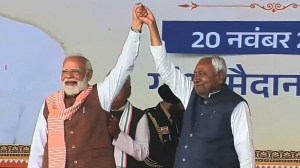What makes Naruto a superhero for Indians? Here’s why manga and anime are sweeping across generations
From the captivating storytelling and intricate art styles to the relatable characters and a sense of community, these Japanese fiction genres have carved out a special place in the hearts of its fans
 Anime has become a cultural phenomenon that resonates deeply, offering both personal and collective experiences
Anime has become a cultural phenomenon that resonates deeply, offering both personal and collective experiences Pasang, chef and founder of Japanese restaurant Lea Izakaya in Delhi’s Humayunpur, recently got a strange request from a group of youngsters. “Bhaiya, Naruto ramen milega (Do you have Naruto ramen?).” Naruto Uzumaki, the protagonist of the popular eponymous manga series, is often seen wolfing down bowls of ramen. And who doesn’t want to be like Naruto?
“I’ve imbibed Naruto in my life. I used to be an introvert but after watching the show, it gave me the courage to speak up. I personally think the world would be a better place if people watched Naruto,” says Mumbai-based manga artist Jazyl Homavazir.
Similarly, at Rohit Pandey’s Harajuku Tokyo Café in Saket, Delhi, a loyal clientèle of young adults keeps returning for Japanese choux pastries shaped like pandas and manga macarons.
While cuisine is one of the many gateways for anime fans to live the Japanese way of life, those like 22-year-old Nikhil Tripathi made that living a reality. In December 2022, Nikhil moved to Tokyo for work from Delhi. On his first day, Nikhil hurried to the Suga Shrine, a quaint temple of the Shinto religion, excited to see the stairs leading up to it. This was the site in filmmaker-novelist Makoto Shinkai’s anime feature Kimi no Na wa (2016), where much of the action unfolded. “In high school, my elder brother introduced me to this film. I loved the movie so much that it inspired me to learn Japanese and eventually move to Japan,” says Nikhil, now, a marketing consultant with a Tokyo firm.
Manga (Japanese comics) and anime (Japanese animation) have been around for decades, but now it’s part of the daily diet for many aged between 12 and 25, some even older. There are several reasons for this.
For Utkarsh Singh, 22, anime helped him interpret life. “The stories deal with the main character’s struggles: having a dream, going to any extent to achieve it, and never giving up. It helps you when you are struggling as a kid who never fits in and when you feel that no one is there for you.”
****
Manga’s origin dates to 13th-century Japanese scrolls with sequential images full of humour and wit. Post-World War II, Japan witnessed fervent manga production as the country opened up to the world. As opposed to American comics, which are in colour, mangas are largely printed in black-and-white. With short deadlines of weekly releases, the monotone colour scheme allows manga publishers to save time and printing cost. Animes, which adapted these comics to screen, saw a boom in the 1980s with shows such as Gundam, Macross and Dragon Ball. While these were initially geared for the North American and European audience, now there’s a burgeoning Indian audience, whose fandom is anything but lukewarm. We don’t need to look too far to find an otaku (anime nerd) today.
For Delhi-based Priyamveda Gupta, 16, the anime Death Note became her doorway to an obsession with anime. It was during the Covid lockdown, upon a friend’s recommendation, that the then 12-year-old, with her father, watched the show. Since then, there is no stopping her. “You feel more ‘seen’ when you watch an anime. One finds resonance with the characters. One day, I would like to visit production houses like A-1 Pictures and Ufotable in Japan with a bouquet saying, ‘You have a small budget but your animation is amazing’. We have great respect for manga and anime artists,” she says.
 That anime doesn’t shy away from serious and progressive themes adds to its young appeal
That anime doesn’t shy away from serious and progressive themes adds to its young appeal
One of the most popular anime film production companies is Tokyo-based Hayao Miyazaki’s Studio Ghibli. Their 2023 animation The Boy and the Heron won them an Oscar, a Golden Globe and a BAFTA. This semi-autobiographical anime tells the story of a 12-year-old boy who lost his mother during World War II. Their films — including popular ones such as Howl’s Moving Castle (2004) and My Neighbor Totoro (1988) — create magical realms where the supernatural and the mundane coexist.
*****
From the captivating storytelling and intricate art styles to the relatable characters and a sense of community, anime has carved out a special place in the hearts of its fans. It’s more than mere entertainment — it’s a cultural phenomenon that resonates deeply, offering both personal and collective experiences.
Popular titles among Indian manga readers include Jujutsu Kaisen, Death Note, Demon Slayer, Spy X Family, One Piece, Chainsaw Man and Naruto. Death Note tells the story of a brilliant but bored high-school student Light Yagami, who discovers a notebook that grants the power to kill anyone whose name is written in it, and delves into the depths of human nature. In Spy X Family, we meet elite spy Twilight, who is tasked with creating a fake family for his latest mission. The story combines action, comedy and heartwarming moments, exploring the delicate balance between duty and love.
A reason for manga’s popularity among young adults is the diversity of genres — action, sci-fi, adventure, fantasy, romance, comedy, horror, business and commerce. There’s a manga for every demographic. These include Kodomomuke (for children), which packs in simple, wholesome storylines, with vibrant art styles and positive role models. Shounen, aimed at young boys, is packed with high-energy action. It features protagonists who grow stronger through epic battles and unbreakable friendships.
Shoujo targets young girls and focuses on romance, emotional drama and beautiful art. It tells heartfelt stories about love, personal growth and overcoming obstacles. For adults, there is Seinen, which offers sophisticated narratives, with gritty realism and psychological depth, and Josei, that presents realistic portrayals of romance and daily life.
***
That anime doesn’t shy away from serious and progressive themes adds to its young appeal. Diya Sood, 21, shares how the anime Your Lie in April taught her to deal with grief and sorrow. “Watching anime has taught me to be empathetic. Shows like Komi Can’t Communicate (2021-22) and A Silent Voice (2016) explore mental health issues,” says Shimla-based Diya. This psychology student adds that anime even has characters dealing with mental health issues, showing that there are people who will support them for who they really are. “It is also a bridge between people, fostering connections through shared interests and experiences. When I encounter an introvert who watches anime, they become comfortable opening up to me,” she says.
Anasuya, a final-year law student from Bengaluru, points to the Boys’ Love (BL) genre, with popular titles like Yuri on Ice (2016-17) and Sasaki to Miyano (2022-), and how it highlights LGBTQIA+ relationships.
Yuri on Ice, for instance, is the story of a once-promising figure skater Yuri Katsuki who faces a career slump until his idol, the enigmatic Russian champion Victor Nikiforov, becomes his coach. The plot captures the struggles and triumphs of chasing dreams and finding love, on and off the ice.
****
India watched its first anime in 1993 on Doordarshan. Dubbed in Hindi, Janguru Bukku Shonen Moguri, an Italian-Japanese production, instantly became a household hit. So popular that even 40-year-olds today get nostalgic hearing its opening score. Composed by Vishal Bhardwaj with lyricist Gulzar, it went — Jungle jungle baat chali, pata chala hai/ Arrey chaddi pehnke phool khila hai, phool khila hai. “The Jungle Book was the first anime that we saw. It says a lot about our awareness of
what anime was back in the day and how it is right now,” says Jatin Verma, founder of Comicon India.
Sony’s Crunchyroll, the anime OTT service recently launched in India, predicts that Indian subscribers will contribute 60 per cent to its global growth rate in a few years. Viz Media, one of the largest publishers of manga (comics and graphic novels) worldwide, exports around 3,000 manga titles to India every year.
Aoi Ishimaru, director, Arts and Cultural Exchange, Japan Foundation, New Delhi, says that for students, anime and manga are the tickets to understanding their culture. The Foundation’s Manga Cafe (library section dedicated to the genre) teems with school children. One can borrow a book for 15 days but several return them in just three to four days.
 While these Japanese genres have picked up in popularity, they also fill the gap that is left behind with the decline of the superhero genre of Marvel and DC.
While these Japanese genres have picked up in popularity, they also fill the gap that is left behind with the decline of the superhero genre of Marvel and DC.
Manga and anime have seen a steady rise in India. “Since 2012, we might have seen a 50 per cent increase in the books distributed across India. Currently, around 300,000 to 500,000 books are in circulation and we get approximately 250-350 new titles a year. The growth has been phenomenal — 300-400 per cent — since 2020,” says Rahul Srivastava, MD, Simon & Schuster, the official distributor for Viz Media titles in India.
While these Japanese genres have picked up in popularity, they also fill the gap that is left behind with the decline of the superhero genre of Marvel and DC. “In DC and Marvel movies, the world goes around the main characters. But in anime, even the villain gets to be the lead. Sometime, a third team, which is not even important, gets its own story. They show the beauty of Japan — they’ll have cuts of flying butterflies, water falling and famous places of the country. These nuances make people not just fall in love with the main character but with the whole country,” says Nikhil.
Shared values between India and Japan is another cause for the instant connection with animes and manga. Meghna Rawat (aka Misa), 21, a cosplayer, thinks it’s because Indians and Japanese respect everything, from elders to nature. “We also pray and pay our respect to rivers, forests, trees and other things, which is common in Japan,” says Meghna.
****
Finally, anime offers a form of escapism. John Francis, 23, a 3D artist, recalls how transitioning from cartoons to anime opened up fantastical worlds that he could immerse himself in, bringing to the fore complex narratives that cartoons often lacked. Anime has helped him understand his own emotional landscape. “I feel my emotions more deeply nowadays. It’s not just about the action or the drama; it’s about the intricate web of relationships that these characters navigate. It teaches us the importance of empathy, understanding and communication,” says Thrissur-based John.
(Inputs by Hijam Yaiphabi)
Top 5 Must-Watch Anime
1. Fullmetal Alchemist: Brotherhood
Synopsis: In a world where alchemy is the dominant science, brothers Edward and Alphonse Elric commit the taboo of human transmutation, leading to tragic consequences. Edward loses his arm and leg, while Alphonse loses his entire body and has his soul bound to a suit of armour. They embark on a journey to find the Philosopher’s Stone, a powerful artifact that can restore their bodies, while uncovering dark secrets about their world and confronting their own flawed beliefs.
Why You Must Watch: Fullmetal Alchemist: Brotherhood combines an intricate plot with profound philosophical and moral questions, making it more than just an action-packed adventure. The story’s deep exploration of themes like sacrifice, redemption, and the human condition ensures a compelling and emotional viewing experience. The well-developed characters and breathtaking animation further elevate the series, making it a standout in anime history.
2. Attack on Titan
Synopsis: In a world where humanity is on the brink of extinction due to giant humanoid creatures known as Titans, young Eren Yeager, along with his adoptive sister Mikasa and friend Armin, join the military to fight back. As they uncover the truth behind the Titans and the walls protecting humanity, they face harrowing challenges and moral dilemmas that test their resolve and humanity.
Why You Must Watch: Attack on Titan is renowned for its intense, high-stakes action and unexpected plot twists that keep viewers on the edge of their seats. Its exploration of themes like freedom, the human psyche, and the nature of conflict adds depth to its thrilling narrative. The series’ intricate world-building and compelling character arcs make it a gripping and unforgettable experience.
3. Cowboy Bebop
Synopsis: Set in a dystopian future where humanity has colonized space, Cowboy Bebop follows the adventures of the bounty hunter crew aboard the spaceship Bebop. Led by the enigmatic Spike Spiegel, the team—consisting of the quirky Jet Black, the mysterious Faye Valentine, the talented hacker Ed, and the stoic dog Ein—tracks down criminals while dealing with their own troubled pasts and existential dilemmas.
Why You Must Watch: Cowboy Bebop stands out for its genre-blending style, combining elements of science fiction, film noir, and westerns into a unique and stylish narrative. The series features a memorable soundtrack by Yoko Kanno that complements its fluid animation and complex characters. Its episodic nature allows for a variety of stories while maintaining an overarching narrative, making it a classic that resonates with viewers long after the final credits roll.
4. My Hero Academia
Synopsis: In a world where nearly everyone possesses superpowers known as “Quirks,” young Izuku Midoriya is one of the few born without one. Despite this, he dreams of becoming a hero like his idol, All Might. After a chance encounter with the legendary hero, he inherits All Might’s power and enrolls in U.A. High School to train as a hero. Alongside classmates with unique abilities, Midoriya faces challenges that test his resolve and shape his path.
Why You Must Watch: My Hero Academia offers a fresh take on the superhero genre, blending traditional shonen tropes with innovative storytelling. The series excels in character development and explores themes of heroism, perseverance, and self-discovery. Its dynamic action scenes, creative use of superpowers, and engaging plotlines make it a must-watch for fans of action and superhero genres.
5. Spirited Away
Synopsis: Chihiro Ogino, a ten-year-old girl, stumbles into a mysterious and magical world while moving to a new town. When her parents are transformed into pigs, she must navigate this strange realm, filled with spirits and supernatural beings, to find a way to rescue them and return to her world. With the help of enigmatic allies, Chihiro learns about courage, identity, and perseverance.
Why You Must Watch: Spirited Away is a masterpiece by Hayao Miyazaki that captivates with its imaginative storytelling and stunning animation. The film’s richly detailed world and complex characters offer a profound exploration of growth and self-discovery. It combines a whimsical fantasy with universal themes, making it a timeless classic that appeals to audiences of all ages. Its critical acclaim and heartfelt narrative cement its place as a must-watch anime.



- 01
- 02
- 03
- 04
- 05




























